I wanted to toss a page together quick and my thoughts turned to southern Brooklyn’s simple street naming scheme. The Town of Flatbush street naming system as devised in 1874 by the Town Survey Commissioners of Kings County was fairly straightforward: east-west lettered avenues, and north-south numbered streets named East or West depending on their position east or west of Gravesend (now McDonald) Avenue. But from the beginning, developers mucked it up and blurred the lines. The developers of areas like Prospect Park South wanted elegant, British-sounding names and so Avenue A became Albemarle, B became Beverl(e)y and so forth. Avenue E became Foster Avenue, in honor of an early area resident. South of Avenue H, things settled down, and the lettered avenues proceed without incident all the way to Z. With one exception, which I’ll talk about.
I used Google Street View for this page, leaving most of the tags in. New Google Street View shots make it tougher to do screenshots as the images are dotted with icons; perhaps Google wants to protect against piracy in this manner. I tried to get around that as much as possible.
Avenue A

Neighborhoods: Remsen Village/Brownsville
Runs from: Ralph Avenue northeast to Linden Boulevard
Avenues A and B are quiet residential streets; the way Brooklyn’s street grid has evolved, they’re far removed from the remainder of Brooklyn’s lettered streets.
Avenue B
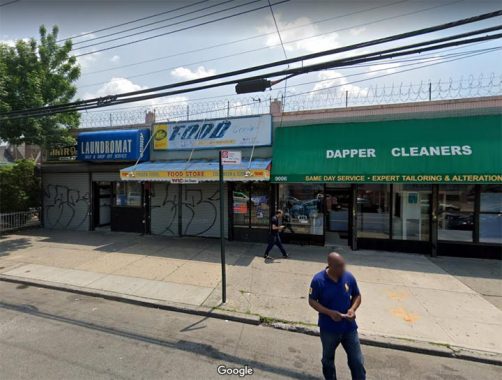
Neighborhoods: Remsen Village/Brownsville
Runs from: Ralph Avenue northeast to East 98th Street
Originally there were indeed an Avenue A and B west of here in Kensington and Flatbush, but early developers of neighborhoods like Prospect Park South like Dean Alvord wanted posh-sounding British names on their streets, and A and B became Albemarle and Beverl(e)y. The city had never totally made up its mind how to spell Beverley, but seems to have settled on “ey” on the latest street signs. The BMT Brighton line station spells it Beverley while the tiled plaques on the IRT station have Beverly.
Avenue C
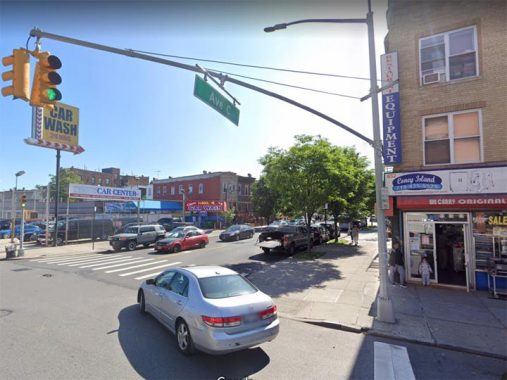
Neighborhood: Kensington
Runs from: Dahill Road east to Coney Island Avenue
Avenue C probably couldn’t be further removed from its brothers, Avenues A and B. Its western end is in the same place it was originally laid out; and it formerly continued east through Flatbush under its own name. Things get complicated.
If we look at this Kings County 1890 map, Avenue C is in place in Kensington, while Cortelyou Road and Ditmas Avenue, the next two avenues to the south, were Avenues D and E. Between Coney Island Avenue and Flatbush avenue, streets are angled to the northeast instead of east and the lettered streets weren’t laid out to be continuous. 1890s Avenues C, D and E became today’s Cortleyou and Dorchester Roads, and Ditmas Avenue. Finally, east of Flatbush Avenue, what was Avenue C became Clarendon Road.
Echoes of that weird arrangement can be seen today as Ditmas (the old Avenue E) ends at Coney Island Avenue but continues on east a block south as the eastern continuation of 18th Avenue, a street that belongs to the old Town of New Utrecht street plan.
This stuff must be incredibly dry for some but it fascinates me! We’ll see more oddnesses in alphabetical street order later on.
Avenue D
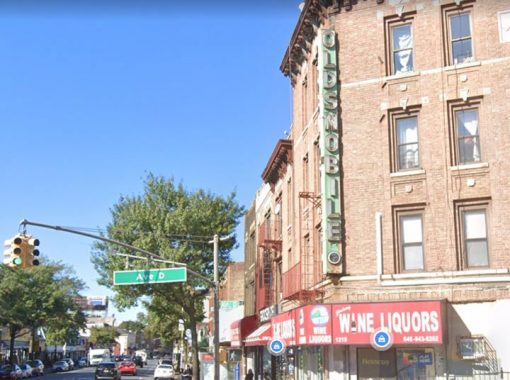
Neighborhoods: Flatbush, Canarsie, East New York
Runs from: Flatbush Avenue to East 57th Street at Ditmas Avenue; Foster Avenue to Linden Boulevard
Avenue D is mostly residential in its Flatbush section, but there’s also a business/retail section between Albany and Schenectady Avenue that has its own genus of modular combination stoplights/streetlights (similar to the arrangement on West 181st Street in Washington Heights). You can see those on this Street View shot.
Once Avenue D resumes from interruption in northern Canarsie, it’s lined with car repair, tire shops, wholesale lumber, and a Pepsi bottling plant, as it runs along the south side of the LIRR Bay Ridge branch. It’s a busy truck route as it ends at Linden Boulevard at the L train overpass a block south of the New Lots Avenue station.
Avenue E
Though “E” is the most frequently-used letter in English, there hasn’t been an Avenue E in Brooklyn for over a century. As originally plotted, it ran from West Street (Dahill Road) to Coney Island then northeast to Flatbush Avenue in the present Ditmas Avenue roadbed; and to continue on Avenue E you needed to go a couple of blocks south, where Avenue E describes the present Foster Avenue’s pathway east and northeast to the Canasie Railroad (present L train) cut.
I discuss southern Kings County’s street layout further on this Parkville to Brownsville walk.
Avenue F
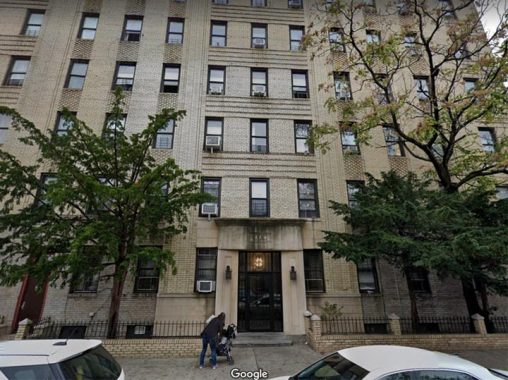
Neighborhood: Kensington
Runs from: Dahill Road to Ocean Parkway
Avenue F is the shortest of Brooklyn’s lettered avenues in total coverage (there’s a part of Avenue Y that runs about 50 yards in Bath Beach; see below) running just 6 total blocks. Of course, that wasn’t always the case. There had been an Avenue F running east and northeast from Flatbush into Canarsie, but by 1900, that section had been named Farragut Road, breaking with earlier tradition of renaming lettered avenues for British place names such as Albemarle, Beverley, Clarendon and Dorchester.
Admiral David Farragut (1801-1870) was the greatest naval commander of the Civil War. Farragut‘s father was a Spanish sea captain who fought for the colonies in the Revolution. After his mother died, his father allowed the boy to be adopted by U.S. naval officer; Farragut accompanied him during the War of 1812, and Farragut obtained his first command during the Mexican War in 1848.
In 1862, when Farragut’s Union fleet took New Orleans, he was made a rear admiral. Fifteen months later, Farragut sailed to Mobile Bay to take on one of the Confederacy’s most indispensable ports.
At the height of the battle for Mobile Bay, Farragut was lashed to the mast of his ship so he could see further into the distance. Noticing that the bay was booby trapped with mines, Farragut chose to enter the bay anyway, shouting “Damn the torpedoes! Full speed ahead!” In the naval parlance of the day, a mine laid at sea was called a torpedo. The North took Mobile Bay.
Congress created the rank of vice admiral for Farragut, and he later became admiral. He died in 1870.
Avenue G

Avenue G was laid out in 1873, but today its entire length has been assumed by Glenwood Road as it runs from Coney Island Avenue east and northeast through Canarsie, ending at Louisiana Avenue at the Breukelen Houses. Cozine Avenue is a northeast extension of Glenwood Road. Today the only remnant of Avenue G is a pair of gateposts at Ocean Avenue and Glenwood Road; see this FNY page.
Between Coney Island Avenue and East 19th Street Glenwood Road has a grassy center median.
I may as well take the time to discuss something really strange in the Brooklyn lettered avenue street layout. If you look at the present-day map, roads such as Farragut Road, Glenwood Road and Avenue H continue east without anything unusual happening until they reach the East 50s and the vicinity of the Glenwood Houses. Then the avenues turn northeast and switch identities. At East 56th, Glenwood Road turns northeast and becomes Farragut; while at East 58th, Avenue H turns northeast and becomes Glenwood!
The reason this came about is interpretable, but the present-day situation is no less maddening. Ralph Avenue was laid out as the divider between street grids, with a general north-south orientation west of it and a northwest-southeast diagonal grid east of it. East-west avenues were offset and weren’t continuous; but when the area was built up, connections were made, but they were made between streets with different names. This must have been maddening for cab drivers in the days before GPS devices, but local denizens have long been used to it.
Clashing street grids also produce some weird street order in Marine Park; see below.
Avenue H
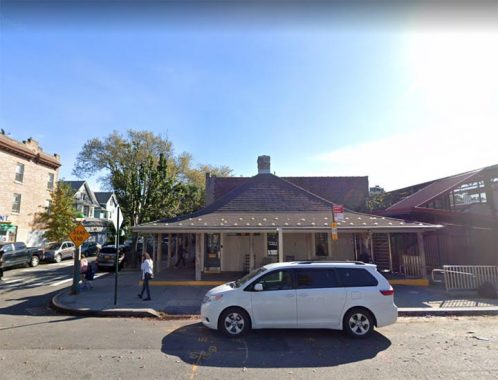
Neighborhoods: Fiske Terrace; East Flatbush
Runs from: Ocean Parkway to Campus Road (Brooklyn College; interrupted by Brighton Line subway at East 15th Street); Nostrand Avenue to East 58th Street at Glenwood Road
Avenue H is a mostly residential area running through the heart of Fiske Terrace, a residential development from the first decade of the 20th Century. Developers the T.B. Ackerson Company converted property formerly belonging to oil merchant George P. Fiske, constructing 150 custom-built, detached, three-story suburban houses with heavy oak ornamental mantels, staircases, beamed ceilings and built-in bookcases, ornately bordered parquet floors and elaborate cabinetry. Many of these homes remain intact today on the streets between East 16th Street and Ocean Parkway north of Avenue H.
The T.B. Ackerson real estate office at Avenue H still stands — it was converted to a station house for the Avenue H station on the Brighton Line (Q train), receiving substantial renovations between 2009-2011.
Avenue I

Neighborhood: Fiske Terrace, East Flatbush
Runs from: Dahill Road to Flatlands Avenue and East 55th Street
Were it not for the Brighton subway cut, which interrupts it at East 15th Street, Avenue I would be the first of Brooklyn’s lettered avenues of more than a few blocks that runs continuously for miles; it’s uninterrupted by college campuses or changes in street grids. It’s a pleasant residential road for most of its length.
Brooklyn has both an Avenue I and J, and its lettered avenues continue up to Z. When Pierre L’Enfant designed Washington, DC he also included lettered streets, as well as streets with names in alphabetical order. L’Enfant left out a J Street because in the late 1700s, the letters I and J were thought of as the same letter with two different sounds (in English, many individual letters stand for different sounds) and there were only 25 letters in the alphabet. L’Enfant also left out X, Y and Z Streets, though there are named streets in the sequence that begin with J, X, Y and Z. To differentiate from Washington’s 1st Street, I Street is often written as “Eye Street.”
Avenue J
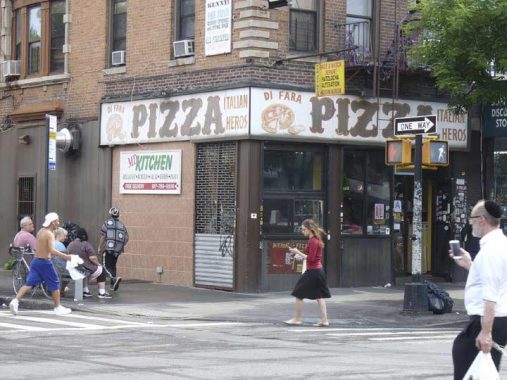
Neighborhoods: Midwood, East Flatbush, Canarsie
Runs from: Dahill Road to Ralph Avenue; East 80th to East 108th Street
This is the first really continuous lettered avenue in Brooklyn, running uninterrupted in two separate stretches. Mostly residential except for a really busy shopping/business district between Ocean Parkway and Ocean Avenue, punctuated by a stop on the Brighton subway line. It’s also the first in a series of lettered avenues that has a stretch in Canarsie.
DiFara Pizza, at Avenue J and East 15th, has been owned and operated by Domenico DeMarco since 1964 and the original painted signs may still be on the exterior. DeMarco himself, at age 84 in 2020, still prepares most of the pies personally. DeMarco, a native of the Caserta province in Italy, near Naples, immigrated to the States in 1959 and after working on a Long Island farm, decided to go into business as a restaurant owner and “pizzaiolo” and opened DiFara with a partner named Farina; Di Fara is a portmanteau of the two names. DeMarco bought out his partner in 1978.
He makes 100 to 150 pies a day. DeMarco uses imported ingredients – flour, extra-virgin olive oil, San Marzano tomatoes, buffalo mozzarella cheese from Casapulla, freshly grated grana padano (a slightly salty hard cow’s milk cheese), three types of mozzarella cheese, and hand-grated Parmigiano Reggiano cheese are all from Italy, and the basil and oregano are from Israel. In a windowsill flower box, he grows thyme, oregano, basil, rosemary, and hot peppers. He cuts fresh basil over each pie with a pair of kitchen scissors. The pizzas bake for a few minutes at about 800 °F (427 °C).In July 2009, Di Fara raised its price for a plain slice of pizza from $4 to $5, becoming the first $5-a-slice pizza place in New York City. wikipedia
To me the slices seemed smaller than they did on my last visit a decade previous. The tomato and basil flavors were unique among pizzeria slices I’ve long been used to (though Best Pizza in Williamsburg uses basil).
The ‘best’ pizza in NYC costs $30 for a regular pie — and it’s ridiculously delicious [Business Insider]
A dissenting view:
Not A Love Letter: Di Fara Is Home To New York City’s Junkiest Pizza Slice [Food Republic]
Prepare for a lengthy wait on a busy day, and when in-store tables open up again, there’s only two or three!
Avenue K
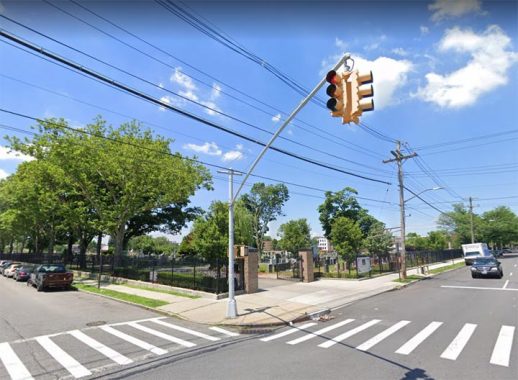
Neighborhoods: Midwood, East Flatbush, Bergen Beach, Canarsie
Runs from: Ocean Parkway east and northeast to Bergen Avenue; East 80th to East 108th Street
Avenue K begins at Ocean Parkway at Washington Cemetery, one of Kings County’s oldest cemeteries, founded in the 1850s, and miles east of that, runs past Canarsie Cemetery, which goes back to the 1890s. It’s just an oversight but I’ve never wandered around in Canarsie Cemetery (or nearby Holy Cross Cemetery), which from the photos are a beautiful burial parks.
Between Flatbush Avenue and Kings Highway, Avenue K moves north about half a block as it runs through Old Flatlands Village.
Avenue L
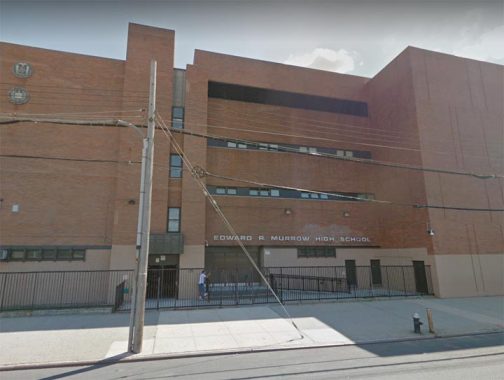
Neighborhoods: Midwood, East Flatbush, Bergen Beach, Canarsie
Runs from: East 4th Street at Sid Luckman Field east to Flatbush Avenue, Troy Avenue east and northeast to Bergen Avenue; East 80th to East 108th Street
Sid Luckman (1916-1998) born in Brooklyn (as a kid his family lived at Cortelyou Road and Lott Street), quarterbacked the Chicago Bears to four NFL championships, in 1940, 1941, 1943 and 1946. He was considered a pioneer in long-range passing, a cornerstone of the modern game, and led the NFL in passing and touchdown passes for three seasons.
Edward Roscoe Murrow (1908-1965) was a pioneer in WWII reportage for CBS, broadcasting from London during the Blitz. His radio and TV documentaries, Hear It Now and See It Now, set the standard for investigative journalism; he opposed Senator Joseph McCarthy and the House Un-American Activities Committee in an era when it was unusual for journalists to take stands. Later, his interview show Person to Person pioneered TV celebrity interviews. Always a heavy smoker, even on air, Murrow died of lung cancer at age 57.
Edward R. Murrow High School was founded in 1974 and built in the prevailing Brutalist style of the time. Given Midwood’s motion picture (Vitagraph) and NBC TV history (see Avenue M, below) naming it for a broadcasting great likely wasn’t coincidental even though Murrow largely worked for NBC rival CBS. Alumni include actress Marisa Tomei (My Cousin Vinny) and the late Adam Yauch of the Beastie Boys; the school’s theatre program is prominent.
Avenue M
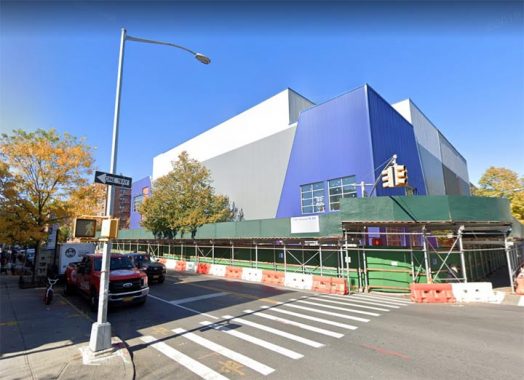
Neighborhoods: Midwood, East Flatbush, Bergen Beach, Canarsie
Runs from: Dahill Road east to Flatbush Avenue; Flatlands Avenue east and northeast to Bergen Avenue; East 80th to East 108th Street
Midwood was once the capital of Brooklyn movie and TV production, and it was all centered along Avenue M. First came Vitagraph Studios…
The Encyclopedia Of New York City (Yale University Press, 1995) has this listing on Vitagraph Studios:
An open-air, rooftop motion picture studio, opened in 1898 by American Vitagraph in the Morse Building at 140 Nassau Street [Manhattan]. The film Burglar On The Roof was produced in the studio during its first year. In 1890 the company moved its offices to 110-16 Nassau Street and then opened a glass-enclosed studio in 1906 at 15th Street and Locust Avenue in Flatbush…
…Warner Brothers purchased American Vitagraph in 1925 and used the studio for many of its Vitaphone short subjects before closing it in 1939; it continued to produce film there even after the National Broadcasting Company (NBC) bought the studio in 1952 and began using it for color television broadcasts.
Vitagraph Studios turned out hundreds of silent Westerns and Civil war battle pictures in the surrounding neighborhood, which was still open country in the 1910’s.
After the advent of talkies, Vitagraph continued to make movies under the name ‘Vitaphone’ until 1939; older Warner Brothers cartoons carry the name. The Shulamith School For Girls took the Vitagraph studios site, but the buildings have been razed except for housing, except the smokestack near the Brighton tracks.
In 1954, NBC took over one of the smaller Vitagraph buildings and produced one of the first color TV shows, a special called Satin and Spurs starring Betty Hutton. NBC continued to bill itself as a pioneer in color TV, adopting a peacock as its symbol. NBC built the much larger Studio 2 at Avenue M and East 14th Street in 1956. If you’re “of a certain age” you remember some of the shows taped at Studio 2: Sing Along With Mitch, Hullabaloo, Sammy Davis Jr. Variety Hour, Kraft Music Hall; and more recently, several episodes of Saturday Night Live in 1975, the Cosby Show, and soaps Another World and As The World Turns, the latter taping at Studio 2 until 2010.
Avenue M is Midwood’s main east-west business/shopping street. It bisects a very old former Kings County village called South Greenfield.
Don Rickles hosts Kraft Music Hall from Midwood in 1968:
Avenue N
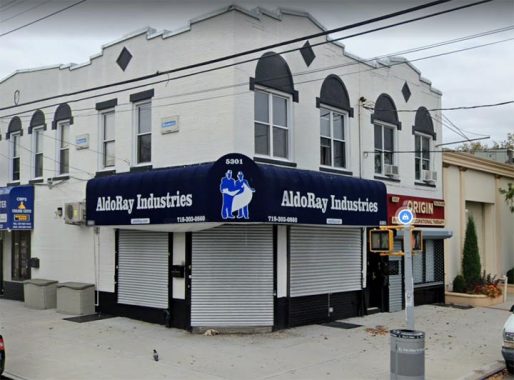
Neighborhoods: Midwood, Mill Basin, Bergen Beach, Canarsie
Runs from: Dahill Road east to Flatbush Avenue; Flatlands Avenue east and northeast to Bergen Avenue; East 80th to East 108th Street
I seriously doubt that Aldo Ray (1926-1991) who played tough guys in movies for five decades, had anything to do with Aldo Ray Industries, but who knows? (I gather it was founded by an Aldoray Gibson, who may have been named for the actor). Avenue N is a quiet residential street in the various neighborhoods it runs in, with a quiet retail stretch in Mill Basin in the East 50s.
Here I want to bring up something unusual in the order of lettered streets in Mill Basin and Marine Park. Because Marine Park’s streets are gridded at an angle athwart the prevailing north-south orientation, where the grids meet, the order of the lettered avenues is thrown into chaos along Flatbush Avenue, which serves as a divider between the two grids.
For example: if you’re traveling southeast along Flatbush Avenue from Kings Highway, the order of lettered avenues you encounter are: M, P, N, Q(uentin Road), and O and R at the same intersection. South of that, developers laid out Fillmore Avenue which fills the gap and allows Avenue S to continue past Flatbush Avenue as Avenue S.
Grids clash again in Bergen Beach, where purely due to the peculiar street layout the next avenue south of Avenue N is not O, but T. Only in Brooklyn….
Avenue O

Neighborhoods: Gravesend, Midwood, Mill Basin
Runs from: Bay Parkway east to 65th Street; Dahill Road east to Kings Highway; Flatbush Avenue east to Ralph Avenue (interrupted at East 48th Street by MTA bus garage)
Avenue O is the first Brooklyn lettered avenue that encounters the West numbered streets that are found west of McDonald Avenue. If you look at its location on the map, it runs through a “wedge” of Gravesend north of Avenue P. Some nay dispute me calling it Gravesend but I don’t know what else to call it. The wedge is a triangle bounded by Avenue P, Bay Parkway and 65th Street in a very unusual street grid arrangement.
Avenue P
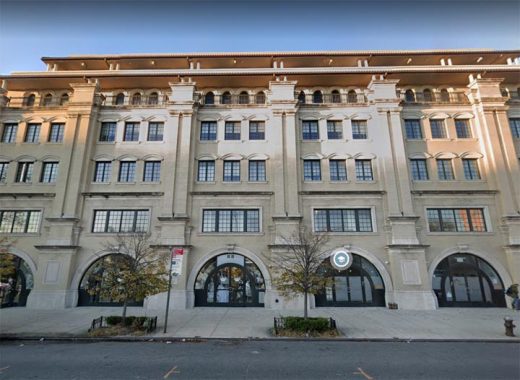
Neighborhoods: Gravesend, Midwood, Mill Basin
Runs from: Bay Parkway east to Nostrand Avenue, then from Nostrand northeast to Flatbush Avenue
Avenue P is a major traffic and truck route in its 4-lane continuous run between Bay Parkway and Nostrand Avenue. At Ocean Avenue, it accepts Kings Highway’s westbound traffic as Kings Highway reduces from eight lanes to two.
From East 2nd to East 3rd Street, the Venetian Condos, completed in 2016, have to be seen to be believed; check out Street View for a full view. Apparently there’s a market for residences built in what appears to be a catering hall.
Avenue Q
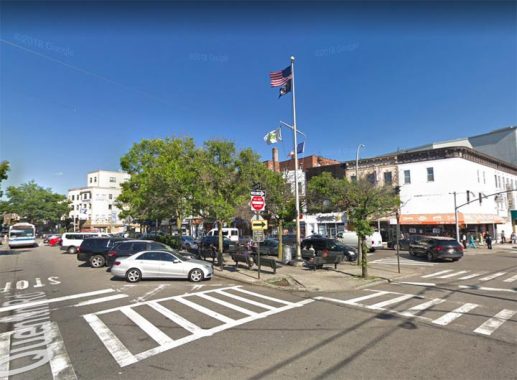
Laid out as Avenue Q, in 1922, the road’s name was changed to Quentin Road, named for a son of Teddy Roosevelt who was killed in an aviation accident. Or was it? On this FNY page, I explore the reasons behind the name change, which aren’t as cut and dried as all that.
Poet, editor, and soldier Joyce Kilmer was born in New Brunswick, NJ. He wrote voluminously in the early 20th century and joined the staff of the New York Times in 1913. When the USA entered World War I in 1917, Kilmer eagerly enlisted, and was subsequently transferred to Francis P. Duffy’s 165th Regiment…the famed Fighting 69th. He died in combat in France in 1918 and is buried at Fere-en-Tardenois in that country. Though his given name was Alfred, he preferred his middle name, Joyce, from his mother’s family.
Avenue R
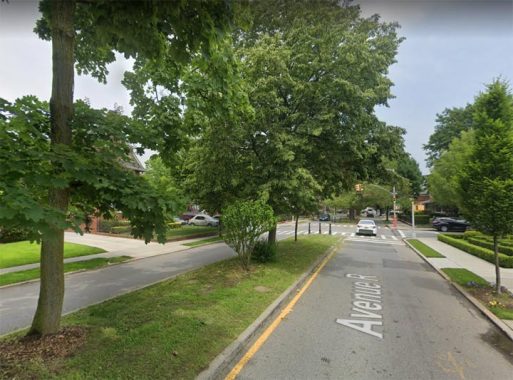
Neighborhoods: Midwood, Marine Park
Runs from: Kings Highway at East 5th Street east to Gerritsen Avenue, then Gerritsen Avenue northeast to Flatbush Avenue at Avenue O
Avenue R is mainly residential. Between Ocean Parkway and Coney Island Avenue it has a grassy median similar to avenues north of it such as Glenwood Road.
Avenue R formerly had a stretch between Stillwell Avenue and West 3rd Street, but by the 1920s it had taken the name of a real estate development called Highlawn. See the story on this FNY page.
Avenue S
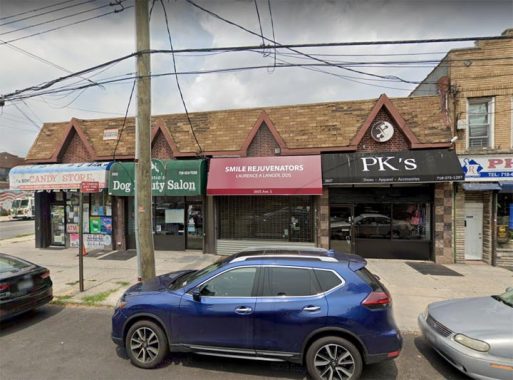
Neighborhoods: Gravesend, Homecrest, Marine Park
Runs from: Stillwell Avenue at about 83rd Street east to Gerritsen Avenue, then Gerritsen Avenue northeast to Stuart Street; then East 32nd northeast and east to Avenue T at East 55th
I’ll admit, there’s not much to write home to mother about with the lengthy, flat lettered avenues of southern Brooklyn except that as a kid and in to my 30s when bicycling around the borough I found them ideal. As a cyclist, hills and inclines were my mortal enemies and now, at age 62 (in 2020) I just get off the bike and walk them and don’t feel any shame about it.
Close to the stores pictured here on West 36th, there’s a colonial era house that FNY covered on February 2020.
Like Avenue T, Avenue S is interrupted by Marine Park.
Avenue T
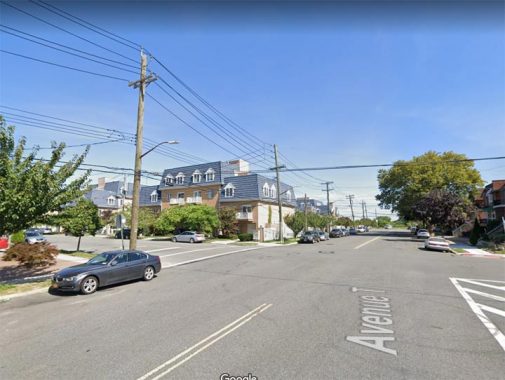
Neighborhoods: Gravesend, Homecrest, Marine Park, Bergen Beach
Runs from: Stillwell Avenue at 85th Street east and northeast to Stuart Street; then East 33rd northeast and east to Bergen Avenue
Brooklyn has a “last frontier”: Bergen Beach and a subdivision called Georgetown, in the wedge of territory between Ralph Avenue, Bergen Avenue and Mill Basin. In the Super 70s I very briefly dated a woman from Bergen Beach and when I went out there, there were nothing but empty lots north of Avenue T and east of Ralph. The houses south of Avenue T had been built in the 1950s, which still made them fairly new in the 1970s. As you got toward the Belt Parkway things got undeveloped again and Bergen Avenue and Avenue Y were dirt roads.
Avenue U
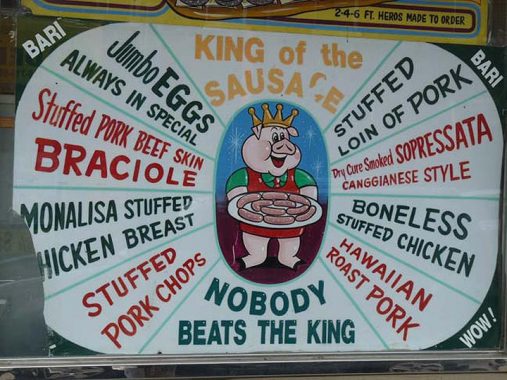
Neighborhoods: Gravesend, Homecrest, Marine Park, Bergen Beach
Runs from: Stillwell Avenue at Bay 43rd Street east and northeast to Bergen Avenue
If any Brooklyn lettered avenue can claim to be one of Brooklyn’s many main streets, Avenue U can put in. Though there are residences scattered around, it’s mostly commercial all the way to Marine Park. Along its length you can find a monument to Antonio Meucci, the true inventor of the telephone; Russian, Chinese and Italian restaurants and diners galore; one of Brooklyn’s largest parks (Marine Park) and one of the first indoor shopping malls in the Northeast U.S., Kings Plaza at Flatbush, which attracts car and busloads from all over the borough. It’s also the main road to the neighborhood of Mill Basin, where some of the gaudy homes have to be seen to be believed.
Pictured is one of the many handlettered signs at the former Bari pork store at West 7th Street by the Sea Beach N train; it has since left the location.
Avenue V
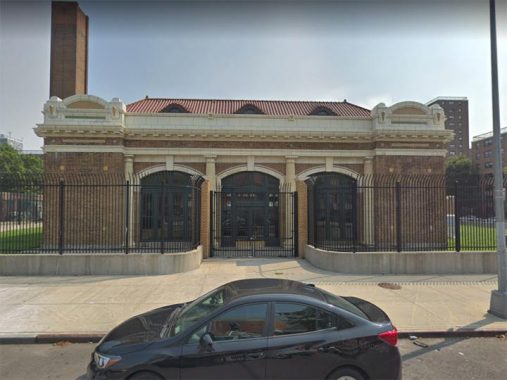
Neighborhoods: Gravesend, Homecrest, Marine Park, Bergen Beach
Runs from: Stillwell Avenue at Benson Avenue east to Van Sicklen Street (interrupted by Sea Beach N train); Gravesend Neck Road east and northeast to Burnett Street at Marine Park; East 38th Street northeast to Flatbush Avenue; and East 69th Street northeast to Bergen Avenue
Avenue V runs in pieces, mostly as a residential avenue, skirting the Marine Park Golf Course.
Standing on Avenue V just west of 86th Street in Gravesend is one of NYC’s very few decorative structures associated with its sewers, all due respects for the gigantic Digester Eggs of Greenpoint. It resembles one of the Beaux-Arts subway entrance buildings designed by Heins and LaFarge back when the subway originally opened in the first decade of the 20th Century. The Avenue V Pumping Station was constructed between 1911 and 1916, at the tail end of the Beaux Arts era, designed by architect Albert A. Martin and was eligible for NYC Landmarks designation in 1998. It was given a $210M dollar restoration in 2015 that repointed the brickwork and touched up its terra cotta trim and Spanish tiled roof.
The station pumps 80 million gallons of sanitary and stormwater flow to the Owl’s Head Wastewater Treatment Plant in Bay Ridge each day, more than 150 percent more than it could before the upgrade. The station’s upgrade also adds to the hope that the brackish, polluted Coney Island Creek will also someday be cleaned up, as is the hope with Gowanus Canal and Newtown Creek.
Avenue W
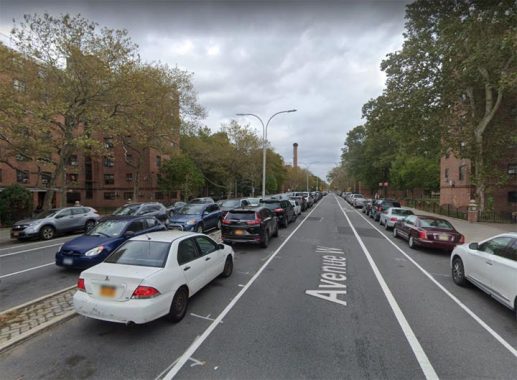
Neighborhoods: Gravesend, Homecrest, Marine Park, Bergen Beach
Runs from: Stillwell Avenue at Marlboro Houses east to West 12th Street; 86th Street at West 6th Street east to East 12th Street; East 16th Street east to Gerritsen Avenue; and East 69th Street northeast to Bergen Avenue.
Another mostly residential avenue through southern Brooklyn; it gains a couple of lanes and a center median as it runs through the Sheepshead and Nostrand Houses. There was also a dead-end pedestrian-only Avenue W on West 13th south of Gravesend Neck Road leading to some bungalows, but that was obliterated approximately 35 years ago.
Avenue X
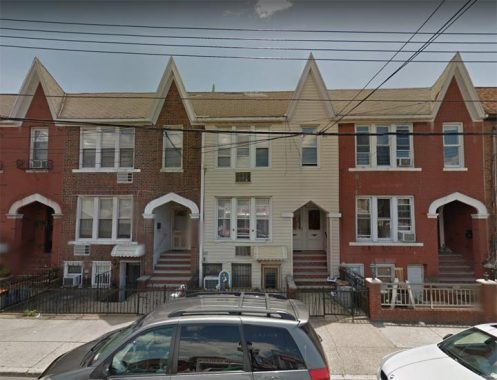
Neighborhoods: Sheepshead Bay, Homecrest, Marine Park, Bergen Beach
Runs from: Stillwell Avenue east to West 8th Street; Boynton Place east to Knapp Street, interrupted by the Brighton Line (Q train) at East 15th Street; Gerritsen Avenue northeast to Knapp Street; and East 69th Street northeast to Bergen Avenue.
Avenue X is residential but liberally dotted with commercial blocks.
In the Super 70s, I was in a bowling league at Mark Roth’s Rainbow Lanes, at Avenue X and Knapp Street. To get there from Bay Ridge, I had a number of ways to do it without a car: take the R train to DeKalb, the D train to Sheepshead Bay and the bus on Avenue Z and Nostrand, which still involved some hiking. Or, I could take the D to Coney Island and get the B36 bus to Nostrand and X, still some hiking while carrying the bowling ball and shoes in a leather case. Remember, I had to repeat that going home, when service was at a minimum, so some nights I crawled in at 2 AM and had classes the next day at 9. (The D train worked the Brighton Line in the 1970s)
Avenue Y
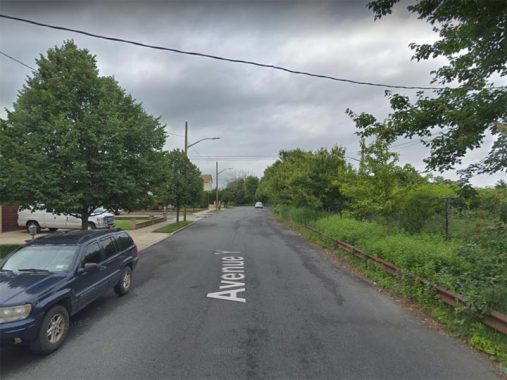
Neighborhoods: Bath Beach, Sheepshead Bay, Homecrest, Bergen Beach
Runs from: Bay 50th Street east to West 15th Street; Shell Road east to Knapp Street; and East 69th Street northeast to Bergen Avenue.
For me the most fascinating bit of Avenue Y is the extremely short section between Bay 50th Street and West 15th. It was laid out in the 1870s to run directly east from there, but both the vast John Dewey High School and humungous Coney Island Subway Yards were constructed from 1920-1970, orphaning that tiny piece a couple miles away from the main section.
Avenue Z
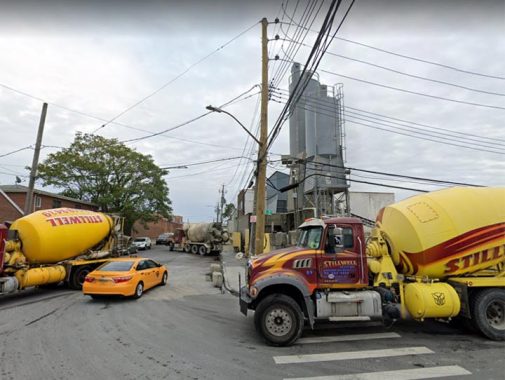
Neighborhoods: Bath Beach, Sheepshead Bay
Runs from: Belt Parkway at Cropsey Avenue east to West 13th Street; Shell Road east to Knapp Street
I found several interesting aspects of Avenue Z, Brooklyn’s southernmost lettered avenue, back in 2011: Coney Island Hospital, a Sheepshead Bay mural, the area’s oldest Catholic parish. It’s livelier than its pals, Avenues X and Y.
Check out the ForgottenBook, take a look at the gift shop, and as always, “comment…as you see fit.”
6/14/20


25 comments
NBC’s Studio 1 at East 14th and Locust Avenue had a swimming pool under the floor built
for taping The Esther Williams Aqua Spectacular in 1956 Also used on Kraft’s Theatre’s
“A Night to Remember,” for life boats as the Titanic sank. Today, Studio 1 is Ohel Family and
Children Services.
I told my kids when they were growing up that the 27th letter of the original alphabet was Voorhies.
i was taught there was no J street in Washington as John Jay had an affair with the wife of L’Enfant – that may not be the case, but it would be a good way of getting revenge
Myth
and the real reason is mundane: it was simply easier to omit it than use it
To answer why there is no J Street in Washington DC, the following information was obtained from the weblink https://badercondominium.org/Bader_Streets.html.
“J is skipped because the architect of the DC street system, Pierre L’enfant, thought that the letters I and J looked almost the same typed and when written were indistinguishable from each other. It would have been too confusing to have two street names that looked the same right next to each other.”
L’Enfant, working in the 1790s, wouldn’t have used a typewriter.
but printing presses existed and were the concern there, which is what was being referred to there…but if you want to get snippy about word choice in responses then so be it
Who’s getting snippy? Jeez, Louise.
There are many people that are very interested in street names and their history. Thank you for the details of Brooklyn’s
alphabet streets.
“This stuff must be incredibly dry for some but it fascinates me!”
Add me to the fascination list! I love stuff like this, I love articles like this, and I especially love your blog as a whole!
The original section of Foster Avenue (McDonald Avenue to Coney Island Avenue) was apparently named for Charles Foster, a trustee of the United Freemen’s Association, developers of the village of Greenfield, later known as Parkville. Section east of Flatbush Avenue originally part of Avenue E. Changed to Foster Avenue east of Flatbush Avenue by ordinance of Common Council, December 10, 1901.
The 1898 E. Belcher Hyde Atlas has an “orphaned” piece of Avenue G between McDonald Avenue and Dahill Road, just north of 18th Ave. Street View shows no evidence that a street was there and it may never have been built.
The 1890 Robinson Atlas shows today’s Bay Parkway between 58th Street and Ocean Parkway, as a diagonal piece of Avenue K, coextensive with 22nd Ave. This was all changed to Bay Parkway in 1892.
Part of Avenue R was renamed for the Highlawn neighborhood upon petition of the Highlawn Board of Trade. (similar to Chamber of Commerce) Renamed by New York City Board of Aldermen in 1921.
Avenue W may be said to have “offspring” in the Gerritsen area, with Whitney Avenue occupying the “W” space east of Gerritsen Avenue.
I have scouted the area you had described, the closest thing I found was a parking lot. I think this might’ve been the right of way of Avenue G as Glenwood is about aligned with the entire lot’s space
No mention of Newkirk Ave…between Ditmas Av and Foster? Also no mention of Kings Highway?
Newkirk was extended east after the 1890s. Kings Highway was a dirt road east of Ocean Avenue until the 1920s. Neither ever had a letter.
I grew up in the 1950’s on E 59 th near Ave L. The area east of Ralph ave to Paerdegat Basin was a landfill then and was about the last area of Brooklyn to be built up. We could actually see the sun rise over the horizon because there were no houses between us and Jamaica Bay. This is where Georgetown is now. Then, it was kind of an alien landscape, which we as kids of course thought was great and referred to as “the dumps”. I believe the fill was largely incinerator ash from a large incinerator located at Ave J and E 57th.. There were regular brush fires in the summer and there was an underground fire that the Fire Department would douse periodically to little effect. I remember the crash of a PBY twin engined Navy airplane there, probably some time in the late ’50’s. There was a small remnant of the original wetlands that was not filled in to the east of Ralph Av along Ave L to maybe E 55 th St., this was built up around 1960.
I took a relative to DiFara a year ago, it took 20 minutes for 2 slices and the taste wasn’t worth the hype! It was two young men and a female laughing and joking and taking their time making everyone’s order. They weren’t even good at greeting people or keeping up with the ratty composition book they use to jot down orders. Just because you have a reputation for long waits doesn’t mean customer service goes out the window! Domenico is seldom there anymore so I’m sure that’s why. It was a first-time-last-time experience.
Of course they were laughing: Laughing at a gullible schmuck willing to pay that much for a lousy slice!
Trust me, the relative was old. I couldn’t turn down the request. Never again I assure you!!!
This is great, but I have one quibble here as a native Brooklynite who played little league at the park located directly at the end of Ave. L at east 4th st. That park is actually Friends Field, Sid Luckman field is behind it further west bordering McDonald ave. I verified through Google Maps that my age addled memory is correct about this.
As a kid I grew up in sheepshead bay could at and avez we lived in a old house nothing but weeds only project was on fire and avez we were known as the farmer boys as the area was being built you remember the fishing boats coming in on a sat and Sunday thousands of people buying fish from the boats great memories as a kid
Are there still handball courts on Ocean Pkwy. and Ave P? In the mid-60’s my friend and I thought we were good at handball compared to the rest of the Parkville kids. One afternoon, we walked down McDonald Ave to the courts to see if we could get a game. Wow! Those guys were REALLY good. I think they let us score a point or two because they were laughing so hard. It was a long walk back to Ave I.
Bari Pork Store on Avenue U was around the corner from my mom’s house. I made sure to stock up at every visit. Also loved the Tarrali at the bakery nearby.
Then there was the Top Tomato produce store at the corner of 86th St and Avenue U. The fresh fish store (W 8th?) was also a favorite. What a great stretch of street!
Sort of off topic but why do some residential address numbers repeat next-door with an “A” attached? I’m sure there’s an obvious answer to this but ever since I started paying attention to these things more while out and about I’ve never been able to find the answer.